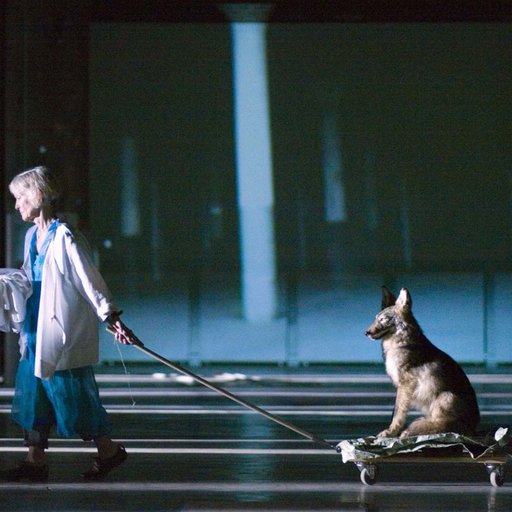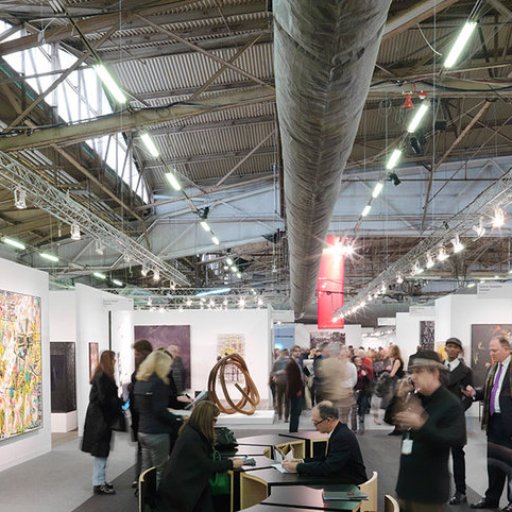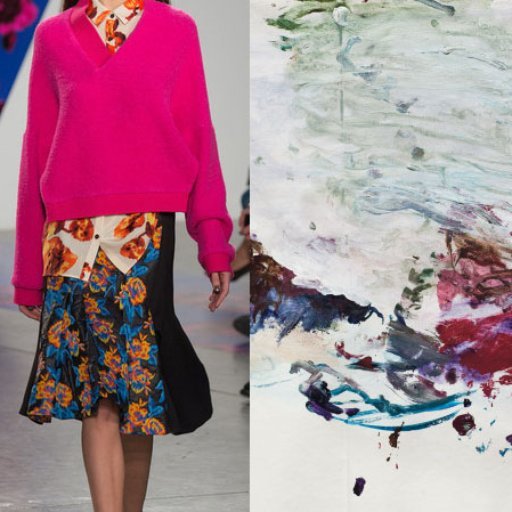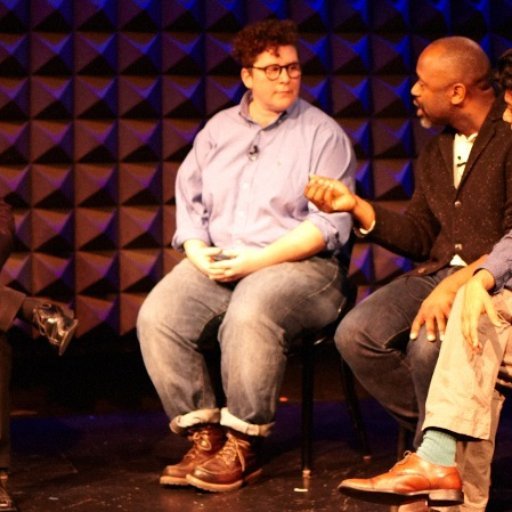In the inaugural show for the newly renovated SculptureCenter, a flock of concrete-block sheep by Judith Hopf throng the first gallery. They are somewhat ironic, as welcoming committees go—but then SculptureCenter, one of the most distinctive platforms for artists in New York, has never followed the art-world herd. From artists like Julia Sherman to Anicka Yi, the Long Island City nonprofit specializes in nurturing emerging and overlooked talents, and is a go-to destination for art insiders seeking the unexpected.
Today, with its newly completed $4.5 million expansion, the venerable institution hopes to attract viewers from beyond the innermost circles of the art world. Tucked away on a quiet street off Jackson Avenue, SculptureCenter has reopened with a clearer entry point and modest interior upgrades—modest, at least, in comparison to the two sleek, high-rise condos it’s wedged between, signs of the deluxe makeover underway in the former industrial neighborhood. But, overall, the nonprofit's building—a former trolley repair shop, replete with red brick and exposed girders—maintains its industrial feel, particularly in its warren-like basement exhibition space, which curators have long prized for its liberating grittiness.
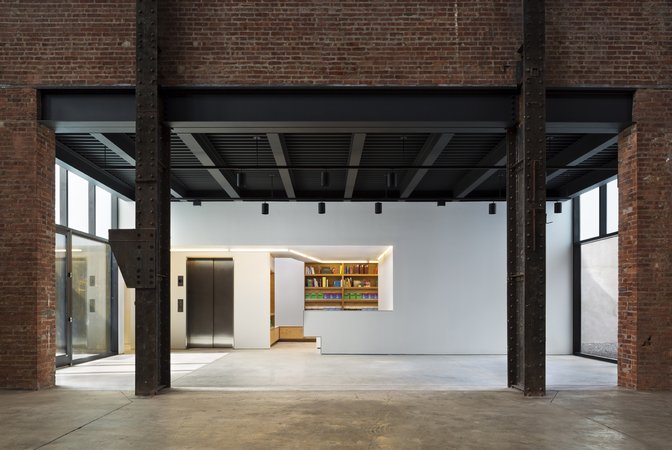 SculptureCenter’s new lobby (Photo by Michael Moran)
SculptureCenter’s new lobby (Photo by Michael Moran)
Previously, the institution was fronted by a gate that opened onto a pebbled courtyard, which then led to a door that immediately accessed the gargantuan brick-and-steel main hall; visitors experienced little sequenced arrival. “When we had a metal and acrylic gate here, people didn’t even necessarily connect this façade with our building,” executive director and chief curator Mary Ceruti recalled on a hardhat tour this summer. The new entrance—executed with weathered steel, plywood, and concrete slabs—includes a courtyard, front desk, dividing wall, and bookshop.
“We wanted to bring the visitor inside in a more controlled, deliberate fashion, so that, by the time they walked around the wall, they were spatially prepared,” said the architect Andrew Berman, who designed the renovation and who has worked on the New York Public Library and MoMA PS1, SculptureCenter's similarly adventurous Queens neighbor.
 A view of “Puddle, Pothole, Portal” (Photo by Jason Mandella)
A view of “Puddle, Pothole, Portal” (Photo by Jason Mandella)
The fact that a more extensive renovation was not deemed necessary is a tribute to the site's initial renovation in 2002 by the artist and architect Maya Lin, who lightly edited the hulking structure, moving the entrance to the back and assigning the offices to the mezzanine. “Maya did us a great favor here, setting up a wonderful situation,” said Berman. “We didn’t have to sift through a century’s worth of detritus.”
Inside, changes to the center are subtle, and appealing. A ceiling pipe has been removed and a passage widened in the basement, where ceramic electrical insulators and chalk lines still mark the concrete walls; the stairwell has also been spiffed up. But the most functionally impactful element of the latest renovations, in fact, might be the addition of an elevator, allowing visitors with disabilities—and installers with heavy loads—to have easier access to these lower galleries.
 Another view (Photo by Jason Mandella)
Another view (Photo by Jason Mandella)
Curatorially speaking, SculptureCenter now has a sense of refreshed possibilities. “A lot of different areas have opened up as new sites and interstitial spaces in which artists can respond to our building,” said curator Ruba Katrib. In her opening show “Puddle, Pothole, Portal,” curated with artist Camille Henrot, artworks are arranged on the ledge of a new pristine stairwell, as well as around old dried-up pipes.
A pair of giant brass crab claws by Maria Lobada peek out of a white wall, like the ruby-shoes of the demised Wicked Witch of the East, while a ramshackle conveyor belt by Abigail DeVille rotates around a stygian corridor of the basement. Upstairs, a latex rubber glove by Olga Balema stretches elastically across the concrete slab floor.
 The juncture of the new and older building at the lower level (Photo by Michael Moran)
The juncture of the new and older building at the lower level (Photo by Michael Moran)
With the show opened in the expanded space, SculptureCenter seems to have deepened its roots in Queens after an 86-year history of migrating nomadically around the city. In 1928, it was founded as the Clay Club in Brooklyn and later joined the Whitney Museum in the West Village; in 1948, it relocated to a carriage house on Upper East Side near the studios of Mark Rothko and Rube Goldberg. In 2001, the board sold the tony space and decamped to Long Island City.
Ceruti admits visitors don’t usually chance upon the center on the quiet Purves Street; art-world pilgrims come knowing. “Moving to New York City from out of town, I didn’t realize that anybody might not go across the river,” she said with a laugh. Now art aficionados in the surrounding boroughs have even more reason to do just that.
















